�
ANALYSIS OF
NUMERICAL METHODS
EUGENE ISAACSON
Professor Emeritus of Mathematics
Courant Institute of Mathematical
Sciences
New York University
HERBERT BISHOP KELLER
Profes~or of Applied Mathematics
Applied Mathematics
California Institute of Technology
DOVER PUBLICATIONS, INC., NEW YORK
Copyright
Copynght © 1966 by John Wiley & Sons.
All nghts
Conventions.
reserved under Pan American and International Copyright
Published in Canada by General Publishing Company, Ltd., 30 Lesmill Road,
Don Mills, Toronto, Ontario
Published in the United Kingdom by Constable and Company, Ltd., 3 The
Lanchesters, 162-164 Fulham Palace Road, London W6 9ER
Bibliographical Note
This Dover edition, first published in 1994, is an unabridged, corrected repub
lication of the work first published by John Wiley & Sons, New York, 1966 For
this edition the authors have corrected a number of errors and provided a new
Preface.
Library of Congress Cataloging-in-Publication Data
Isaacson, Eugene.
Analysis of numerical methods / Eugene Isaacson, Herbert Bishop Keller.
p.
em.
Originally published: New York: Wiley, 1966. With new pref.
Includes bibliographical references and index.
ISBN 0-486-68029-0 (pbk.)
I. Numerical analysis.
I Keller, Herbert Bishop.
II Title
QA297.18
519.4-dc20
1994
94-7740
CIP
Manufactured in the United States of Amenca
Dover Publications, Inc., 31 East 2nd Street, Mineola, N. Y. 11501
�
To our understanding wives, Muriel and Loretta
�
�
Preface to the Dover Edition
This edition contains minor corrections to the original edition. In the 28 years
that have elapsed between these two editions, there have been great changes in
computing equipment and in the development of numerical methods. However,
the analysis required to understand and to devise new methods has not changed,
and, thus, this somewhat mature text is still relevant. To the list of important
tOpiCS omitted in the original edition (namely, linear programming, rational
approximation and Monte Carlo) we must now add fast
transforms, finite
elements, wavelets, complexity theory, multigrid methods, adaptive gridding,
path following and parallel algorithms. Hopefully, some energetic young
numerical analyst will incorporate all these missing topics into an updated
version to aid the burgeoning field of scientific computing.
We thank the many people who have pointed out errors and misprints in the
original edition.
In particular, Mr. Carsten Elsner suggested an elegant
improvement in our demonstration of the Runge phenomenon, which we have
adopted in Problem 8 on page 280.
EUGENE ISAACSON AND HERBERT B KELL~.R
New York and Pasadena
July 1993
�
�
Preface to the First Edition
Digital computers, though mass produced for no more than fifteen years,
have become indispensable for much current scientific research. One basic
reason for this is that by implementing numerical methods, computers
form a universal tool for "solving" broad classes of problems. While
numerical methods have always been useful it is clear that their role in
scientific research is now of fundamental importance. No modern applied
mathematician, physical scientist, or engineer can be properly trained
without some understanding of numerical methods.
We attempt, in this book, to supply some of the required knowledge. In
presenting the material we stress techniques for the development of new
methods. This requires knowing why a particular method is effective on
some problems but not on others. Hence we are led to the analysis of
numerical methods rather than merely their description and listing.
Certainly the solving of scientific problems should not be and is not
the sole motivation for studying numerical methods. Our opinion is that
the analysis of numerical methods is a broad and challenging mathematical
activity whose central theme is the effective constructibility of various
kinds of approximations.
Many numerical methods have been neglected in this book since we do
not attempt to be exhaustive. Procedures treated are either quite good and
efficient by present standards or else their study is considered instructive
(while their use may not be advocated). Unfortunately the limitations of
space and our own experience have resulted in the omission of many
important topics that we would have liked to include (for example, linear
programming, rational approximation, Monte Carlo methods).
The present work,
it turns out, could be considered a mathematics
in selected areas of analysis and matrix theory. Essentially no
text
Vll
�
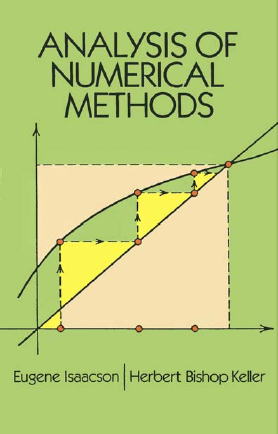
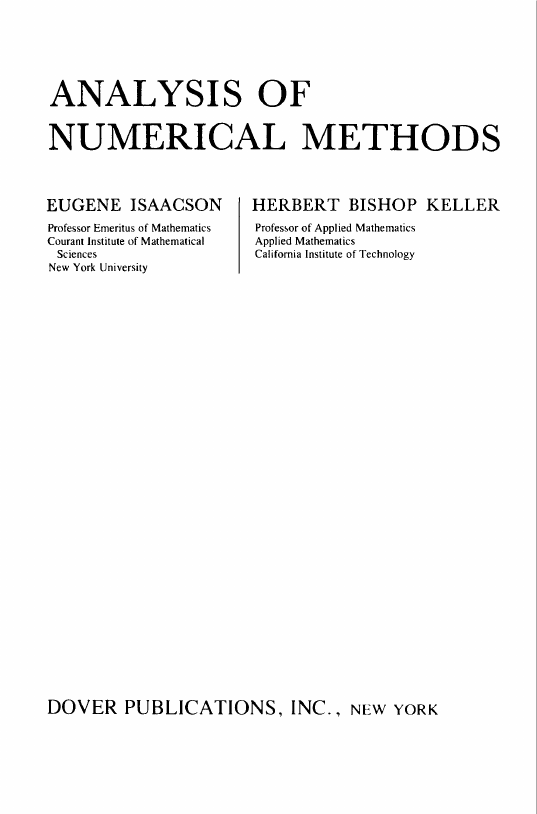
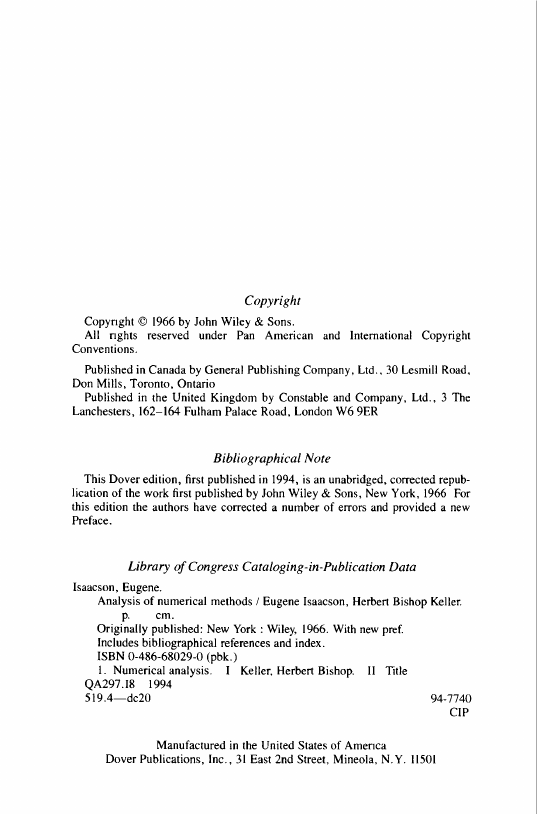
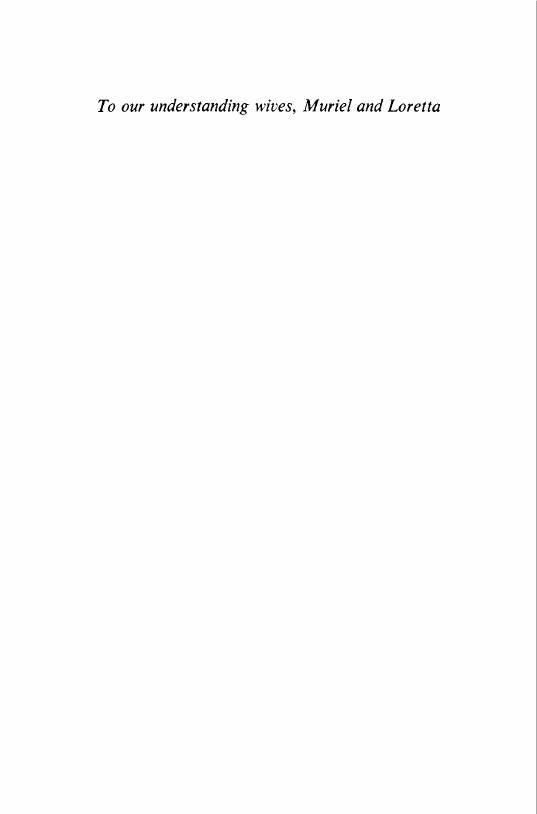



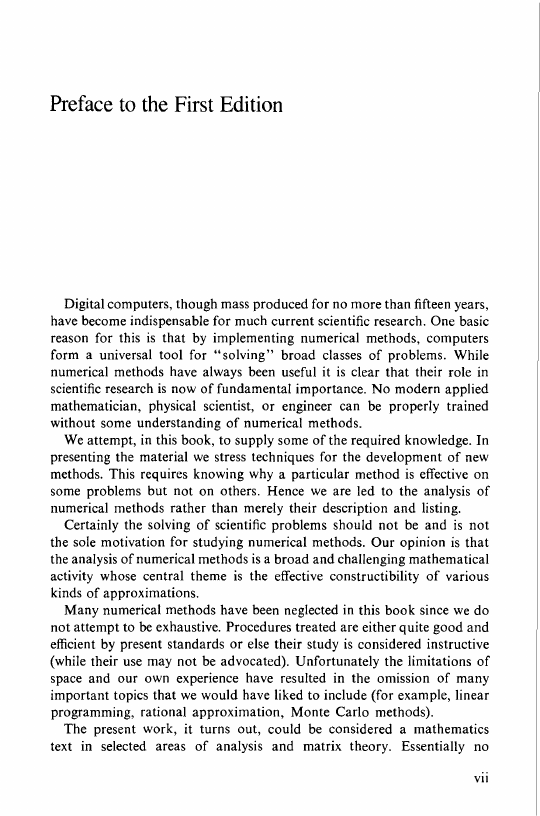








 2023年江西萍乡中考道德与法治真题及答案.doc
2023年江西萍乡中考道德与法治真题及答案.doc 2012年重庆南川中考生物真题及答案.doc
2012年重庆南川中考生物真题及答案.doc 2013年江西师范大学地理学综合及文艺理论基础考研真题.doc
2013年江西师范大学地理学综合及文艺理论基础考研真题.doc 2020年四川甘孜小升初语文真题及答案I卷.doc
2020年四川甘孜小升初语文真题及答案I卷.doc 2020年注册岩土工程师专业基础考试真题及答案.doc
2020年注册岩土工程师专业基础考试真题及答案.doc 2023-2024学年福建省厦门市九年级上学期数学月考试题及答案.doc
2023-2024学年福建省厦门市九年级上学期数学月考试题及答案.doc 2021-2022学年辽宁省沈阳市大东区九年级上学期语文期末试题及答案.doc
2021-2022学年辽宁省沈阳市大东区九年级上学期语文期末试题及答案.doc 2022-2023学年北京东城区初三第一学期物理期末试卷及答案.doc
2022-2023学年北京东城区初三第一学期物理期末试卷及答案.doc 2018上半年江西教师资格初中地理学科知识与教学能力真题及答案.doc
2018上半年江西教师资格初中地理学科知识与教学能力真题及答案.doc 2012年河北国家公务员申论考试真题及答案-省级.doc
2012年河北国家公务员申论考试真题及答案-省级.doc 2020-2021学年江苏省扬州市江都区邵樊片九年级上学期数学第一次质量检测试题及答案.doc
2020-2021学年江苏省扬州市江都区邵樊片九年级上学期数学第一次质量检测试题及答案.doc 2022下半年黑龙江教师资格证中学综合素质真题及答案.doc
2022下半年黑龙江教师资格证中学综合素质真题及答案.doc